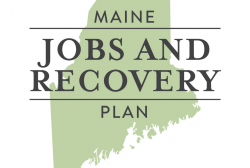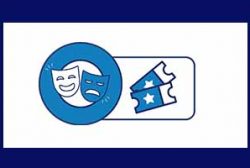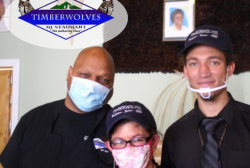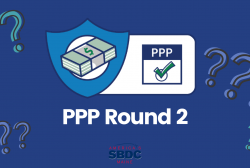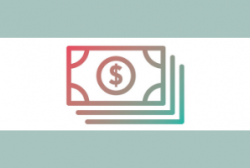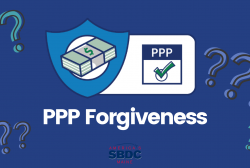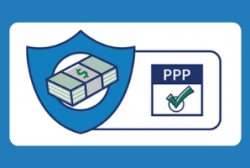SERVICE-BASED
 As a service-based business, you have likely had to make big changes to adapt to the new climate of COVID-19. While some may have been able to move online or in limited capacity, this is not always an option for all serviced-based businesses. The volatile economy will continue to impact businesses as we adjust to the “new normal” and work to recover from the effects of the pandemic.
As a service-based business, you have likely had to make big changes to adapt to the new climate of COVID-19. While some may have been able to move online or in limited capacity, this is not always an option for all serviced-based businesses. The volatile economy will continue to impact businesses as we adjust to the “new normal” and work to recover from the effects of the pandemic.
Moving Your Business Forward
We’ve compiled key information to consider as you move forward. As always, never hesitate to reach out to a Maine SBDC advisor for one-on-one assistance.
Now is the time to stop, review, and assess the current state of your business. It’s important to assess the impact the pandemic has had and will continue to have on your business. Decisions you make now will have a long-lasting impact on your future and your ability to recover. To assess your service business, you should look at each aspect of your business and how it has been impacted by the pandemic.
Operations & Safety
- Review what the purpose of your business was when you first began. How have you been filling that purpose or how it may have changed? What part of running your business are you most passionate about? What parts of your business are most challenging right now?
- Capacity – Are you able to operate at full capacity? Do you have limited service offerings and/or hours? Do you need to space out clients in order to properly clean? How much interaction do you (or your employees) need to have with customers and clients? What additional measures need to be taken?
- Location (if applicable) – How is your location affected? What is needed to operate effectively and ensure protocols are followed? Are there adjustments to the physical space that would help make things run smoothly or keep people safe?
- Employees – How will you keep them safe? Will you train them? Will you provide them with PPE? Do you need to update your employee handbook or create new procedures to guide employees?
- Vendors – How will you interact with your vendors? What if your supply chain is disrupted? Do you have a backup?
- Compliance – Do you need new equipment, materials, or PPE to keep your customers and employees safe?
Finances & Financial Planning
- Revenue: Which revenue streams have been most impacted? What is causing the impact on your revenue? Are your customers still willing and able to pay for your services? Are your services still relevant to your customers at this time? What might be deterring customers from purchasing your services?
- Expenses: How do your expenses look? Are there expenses that can be cut?
- Cash: Have you determined how much cash your business has available to move forward? How long can you run your business at lower-capacity with the available resources? Will you need to look for additional financial resources?
Customers & Marketing
- Plan – When did you last update your marketing plan? Have you updated your marketing plan to be more digital and focused on engaging customers through web/social media platforms? Is your marketing consistent?
- Customers – How is your customer doing? Have their behaviors, spending, or habits changed? How will this impact your revenue? Are different customers purchasing from you than before? Have you lost some customers?
- Products – What is your best-selling product? Are there unique or new services you can offer based on the pandemic?
- Communication – How do you engage your customers? How do you make them feel safe? How do you communicate with them? Do you utilize the internet or e-commerce to promote and/or sell your services? Do customers know where to find you and the hours you’ll be there?
After you’ve reviewed and assessed the most important areas of your business, you can take the necessary next steps. There is no question that rebuilding your business will take time, effort, and likely money. Consider the following as you work to capitalize on the ‘new normal’:
- Safety First – The State of Maine has compiled lists to help guide you. HERE
- Services – Identify what services to offer, how frequently to offer them, how many staff are needed to meet demand.
- Staffing – Do you need to make changes to the staffing schedule to accommodate safety protocols? Staggered shifts? Clear written policies are essential for employees and customers. Talk with your attorney if you have further concerns related to liability.
- Suppliers – Communicate with suppliers about critical products. Do they have what you need? Do they anticipate shortages? Order early if necessary to ensure you have what you need.
- Sales – Can you schedule in advance and/or offer incentives for paying in advance? Is there a way to offer online payments? Can you use technology to make the sales of your service easier and/or touchless?
Protect Customers
- Establish new business practices in advance: temperature controls, hand sanitizer, contactless payment methods, automate as much as possible (i.e. vendor and supplier transactions, etc.)
- Make sure you are communicating new measures implemented that may not be visible to customers (i.e. minimized human interaction, high touch points, etc).
Revive Demand
- Determine and ensure that there is demand for your service among your existing customer base or target customers
- Identify and capture specific pockets of growth. Have an idea for a new service (or complimentary product)? Do a pilot project to test the market. Engage the customers for product feedback.
- Use tactical pricing but do not give your services away or discount your services without understanding your costs.
- Make it easy for customers – facilitate online scheduling, ordering and payments.
- Focus on building brand loyalty by demonstrating high ethical standards
- Help core customers with a pragmatic approach: offer payment extensions if possible, make exceptions for customers in a strategic way
Communicate, Communicate, Communicate
- Update your customers regularly on the status of your business.
- Contact with stakeholders, partners, customers, suppliers, friends, family, press, etc.
- Utilize social media and digital marketing outlets.
- Remember, your customers and employees are looking to you to let them know how you are going to keep them safe.
How long can your business last? Will you have enough cash to get you through the winter? What if an employee gets sick or there is another surge in the virus? What are your next steps?
All of these questions – and more – can be answered to some extent by business planning. Your business plan does not have to be a long, elaborate document that takes months to complete. A business plan can be a simple assessment of where your business stands to help guide you and your future business decisions.
A business plan and the accompanying financial projections allow you to set qualitative and quantitative goals. It also helps you better understand where you are and what you need in order to survive and succeed. Planning helps you better understand “what if” scenarios.
Planning also helps you manage crises better. It helps you respond in a time of panic, providing guidance on situations that might arise and how to respond confidently. Trust us – your future self will thank you for taking this time to create a thoughtful plan.
Get planning now with our resources here.
Need help? Maine SBDC business advisors are experts in business planning. They can guide you through the process and help you feel confident about your next steps (and the future of your business).
REQUEST ADVISING


